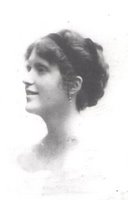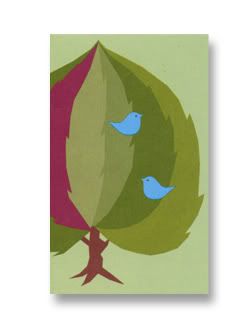After making a visit to his mother’s place to get her blessings for Pranav, we started for Pollachi, yet another destination that I have loved, for its plush green coconut groves, paddy fields, friendly people and the caring big brother Kandan Karunai and his lovely family. After a pleasant walk, talk and a hearty lunch, we started to Guruvayur, which is 2-hours drive from Pollachi via Kollangode and Thrichur.
 This is a view of the Paddy Fields and Coconut Groves at Jamin Oothukuli.
This is a view of the Paddy Fields and Coconut Groves at Jamin Oothukuli.
 The stretch of Wester Ghats seen from Govindapuram, just near the Tamil Nadu - Kerala border.
The stretch of Wester Ghats seen from Govindapuram, just near the Tamil Nadu - Kerala border.
We took nearly 3 hours to reach Guruvayur, stopping in many places to catch the irresistible scenic beauty of the God’s Own country. It was showering in many stretches and by the time we reached Guruvayur at 6:30pm, it was raining heavily. We checked in at Krishna Inn, which is about a furlong from the Temple and after a bath rushed to the temple for a darshan. It was too cold and hence, Pranav had some difficulty in sleeping. However, he managed to sleep after we got a cradle from the hotel and packed it with pillows and blankets.
 This is the majestic statue of Garuda (Eagle) that welcomes the visitors, when they enter Guruvayur.
This is the majestic statue of Garuda (Eagle) that welcomes the visitors, when they enter Guruvayur. The security was very tight due to the Independence Day threats and hence, the cameras were not allowed. The only snap I could capture was the roof of the passage that leads to the temple.
The security was very tight due to the Independence Day threats and hence, the cameras were not allowed. The only snap I could capture was the roof of the passage that leads to the temple.
Though Annaprasanam starts at 5:00 AM, we went to the temple only at 7:00 AM. 10 Years before when I went for the Annaprasanam of my nephew Nitin, it was held just in front of the Garpagraham. Now that, they have allocated a separate hall in the first floor of a building to tackle the multitude of devotees performing this ritual. We were not allowed to be in the hall for a very long time and hence, it was a very brief ceremony, which lasted only for 5 minutes. All the items including cooked rice, payasam (sweet preparation of rice, sugar & milk) plantain etc. were placed on a banana leaf and we were asked to feed Pranav. Everyone attempted their turn and obviously, he spit every bit of what was fed. The best part was, the entire hall was filled with chubby kids with their exaggerated eyebrows and eyelashes drawn with long black stripes like the Kathakali Mohini. With their small gold striped mundus and chains, they were all prosperity, personified!
Next, though unwilling, we had to perform another offering called Tulabaram, in which the devotee is weighed against a commodity of his choice-banana, sugar, water, gold, in fact anything that is permitted inside the temple. Pranav was weighed against blocks of Sugar Candy (Kalkandu).

Then we visited the Mural Painting Institute, which is situated in the Devaswom Complex. We met the Principal and the Chief Instractor Mr.Krishnakumar and a Visiting Professor Mr. Vijaykumar from Baroda University. Had some good education on Mural Painting Tradition of India. The history of Mural Painting of India is traced back to the Ajantha Cave paintings considered to have been executed between 200 B.C and 600 A.D. In South India mural painting flourished in places such as Sittannavasal, Badami, Tanjavur, Vijaynagar and Kerala. Though the tradition of Mural painting is forgotten in most of the states, Rajasthan and Kerala are only states that are guarding it from extinction.
In Kerala, the walls and the gopurams of the temples are the mediums in which the mural paintings are executed. Apart from Hindu temples, a number of churches also have mural paintings with Christian iconographic features. The traditional Kerala mural painting is done only in five colours (Panchavarna) such as Yellow, Green, Red, Black and White. White is the wall or the medium and all other colours are prepared from leaves and stones. The first mural painting depicts multi-headed Ganesh sitting on a Lion, while the theme for the second one is the Dance of Shiva.
The first mural painting depicts multi-headed Ganesh sitting on a Lion, while the theme for the second one is the Dance of Shiva.
 The above mural painting portrays Narasimhamoorthy. The subject or the theme for most of the mural painting is usually different incarnations of Vishnu, different manifestations of Shiva, Rasa Leela, Ganesh and the goddess Devi in different forms.
The above mural painting portrays Narasimhamoorthy. The subject or the theme for most of the mural painting is usually different incarnations of Vishnu, different manifestations of Shiva, Rasa Leela, Ganesh and the goddess Devi in different forms.  The first painting in the above picture depicts the Aphrodite of Hindu Mythology, while the second one is dedicated to Krishna and Balram.
The first painting in the above picture depicts the Aphrodite of Hindu Mythology, while the second one is dedicated to Krishna and Balram.
In 1970, due to a fire accident in the Guruvayur Temple, the mural painting adorning the walls of the sanctum sanctorum was destroyed. When attempting to renovate and redecorate the walls, it was found that there were only a very few artists like Mammiyur Krishnakutty Nair, M.K.Sreenivasan and K.K. Varier who were able to undertake this work. Though, they could complete it successfully, the need to preserve the endangered art of mural painting became a serious thought and hence, the Guruvayur Devaswom established the Institue of Mural Painting in July 1989.
 As a mark of admiration and acknowledgement to this ageless tradition of Mural Painting, we ordered a beautiful painting of Krishna and Radha that will be newly painted and then shipped across to Chennai.
As a mark of admiration and acknowledgement to this ageless tradition of Mural Painting, we ordered a beautiful painting of Krishna and Radha that will be newly painted and then shipped across to Chennai.  With Pranav around it was not pragmatic to visit places around Guruvayur. The elephant sanctuary at Punnathur Kotta about 3 kms north of Guruvayur temple and the Mammiyur Shiva Temple are a must see places when you visit Guruvayur. Hoping to make another trip, may be after a couple of years, we boarded the Allepey - Chennai Express at Trichur and reached Chennai on the next day, 15 Aug.
With Pranav around it was not pragmatic to visit places around Guruvayur. The elephant sanctuary at Punnathur Kotta about 3 kms north of Guruvayur temple and the Mammiyur Shiva Temple are a must see places when you visit Guruvayur. Hoping to make another trip, may be after a couple of years, we boarded the Allepey - Chennai Express at Trichur and reached Chennai on the next day, 15 Aug.



